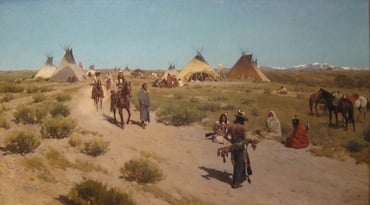1
Och lotten föll ut för Josefs barn sålunda: Landet från Jordan vid Jeriko till Jerikos vatten österut, öknen, som från Jeriko höjer sig uppåt Bergsbygden mot Betel.
2
Och gränsen gick vidare från Betel till Lus och så fram till arkiternas område, mot Atarot.
3
Därefter gick den västerut ned till jafletiternas område, ända till Nedre Bet-Horons område och till Geser; sedan gick den ut vid havet.
4
Detta fingo nu Josefs barn, Manasse och Efraim, till arvedel.
5
Efraims barn fingo, efter sina släkter, sina gränser sålunda: Gränsen för deras arvedel i öster gick från Atrot-Addar ända till Övre Bet-Horon.
6
Sedan gick gränsen ut vid havet. I norr var Mikmetat gräns. Därifrån böjde sig gränsen österut till Taanat-Silo. Därefter gick den fram där i öster till Janoa.
7
Från Janoa gick den ned till Atarot och Naara, träffade så Jeriko och gick ut vid Jordan.
8
Från Tappua gick gränsen västerut till Kanabäcken och gick sedan ut vid havet. Detta var Efraims barns stams arvedel, efter deras släkter.
9
Dit hörde ock de städer som avsöndrades åt Efraims barn inom Manasse barns arvedel, alla dessa städer med sina byar.
10
Men de fördrevo icke kananéerna som bodde i Geser; därför bodde ock kananéerna kvar bland Efraims barn, såsom de göra ännu i dag, men de blevo arbetspliktiga tjänare under dem.







